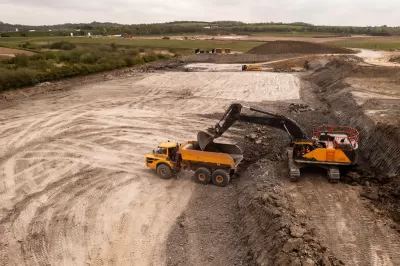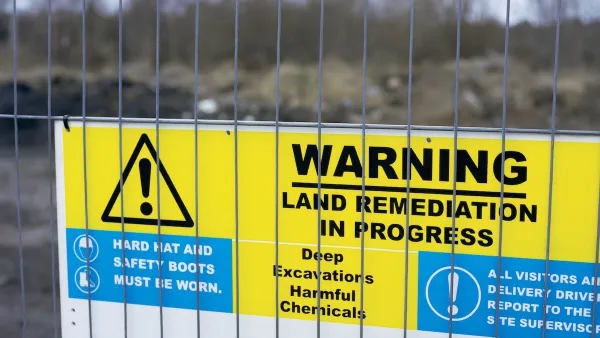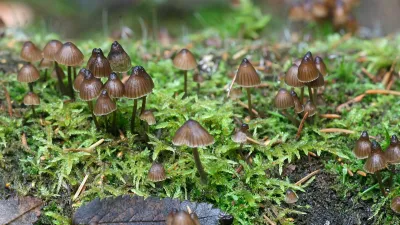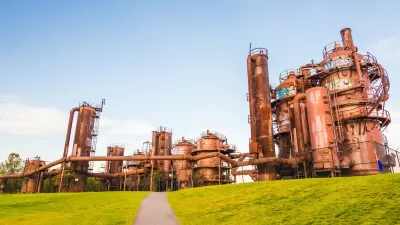Fungi and plants are being used to detoxify polluted sites, turning hazardous brownfields into vibrant meadows and empowering communities with eco-friendly remediation skills.

The United States is home to an estimated one million brownfields — industrial and commercial sites polluted with hazardous substances, often located near low-income and minority communities. Danielle Stevenson, a PhD toxicologist from UC Riverside, has been developing nature-based techniques using fungi and native plants to remediate these contaminated sites. As reported by Richard Schiffman, her methods aim to break down toxins like petroleum, plastics, and pesticides into less harmful chemicals, providing a more sustainable solution compared to traditional methods that involve costly excavation and relocation of contaminated soil.
Stevenson's approach, termed mycoremediation, leverages the natural decomposing abilities of fungi to degrade petrochemicals, transforming them into non-toxic substances. In recent projects in Los Angeles, her team successfully reduced petrochemical pollutants and heavy metals at several industrial sites, transforming these areas into thriving meadows of native plants. These efforts not only rehabilitate the environment but also foster biodiversity, as evidenced by the return of bees, birds, and other wildlife to these revitalized spaces.
Her innovative work extends beyond cleanup to include community empowerment. Stevenson collaborates with environmental justice and tribal communities, offering training programs that enable these groups to manage and remediate their local toxic sites independently. By involving local populations in the restoration process, she promotes environmental justice and provides them with the skills and knowledge necessary to sustain their efforts long-term.
Stevenson's projects demonstrate the potential of bioremediation to address pollution more effectively and sustainably. By integrating fungi and plants into cleanup efforts, her methods offer a cost-effective and ecologically sound alternative to conventional practices. Moreover, her commitment to involving and educating communities ensures that the benefits of these environmental advancements are widely shared, contributing to healthier and more resilient ecosystems.
FULL STORY: Turning Brownfields to Blooming Meadows, With the Help of Fungi

Planetizen Federal Action Tracker
A weekly monitor of how Trump’s orders and actions are impacting planners and planning in America.

Congressman Proposes Bill to Rename DC Metro “Trump Train”
The Make Autorail Great Again Act would withhold federal funding to the system until the Washington Metropolitan Area Transit Authority (WMATA), rebrands as the Washington Metropolitan Authority for Greater Access (WMAGA).

The Simple Legislative Tool Transforming Vacant Downtowns
In California, Michigan and Georgia, an easy win is bringing dollars — and delight — back to city centers.

The Small South Asian Republic Going all in on EVs
Thanks to one simple policy change less than five years ago, 65% of new cars in this Himalayan country are now electric.

DC Backpedals on Bike Lane Protection, Swaps Barriers for Paint
Citing aesthetic concerns, the city is removing the concrete barriers and flexposts that once separated Arizona Avenue cyclists from motor vehicles.

In These Cities, Most New Housing is Under 441 Square Feet
With loosened restrictions on “micro-housing,” tiny units now make up as much as 66% of newly constructed housing.
Urban Design for Planners 1: Software Tools
This six-course series explores essential urban design concepts using open source software and equips planners with the tools they need to participate fully in the urban design process.
Planning for Universal Design
Learn the tools for implementing Universal Design in planning regulations.
Smith Gee Studio
City of Charlotte
City of Camden Redevelopment Agency
City of Astoria
Transportation Research & Education Center (TREC) at Portland State University
US High Speed Rail Association
City of Camden Redevelopment Agency
Municipality of Princeton (NJ)





























